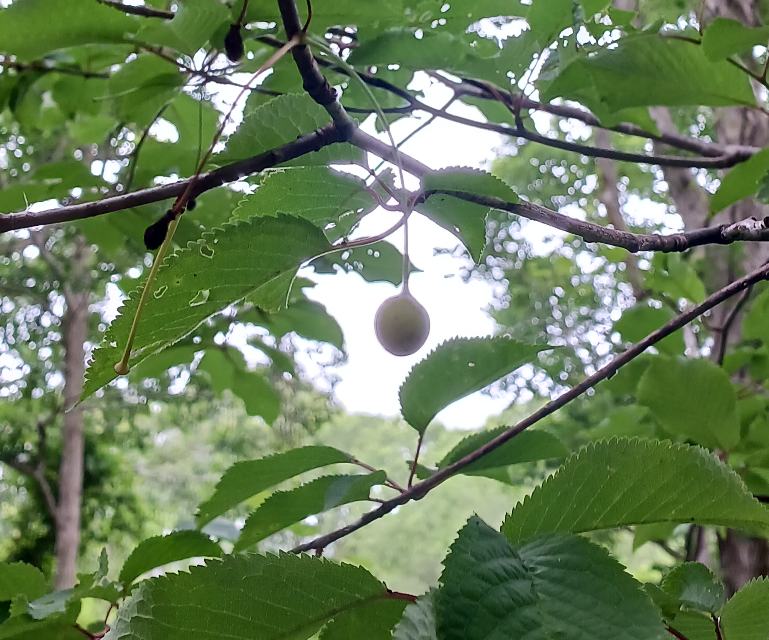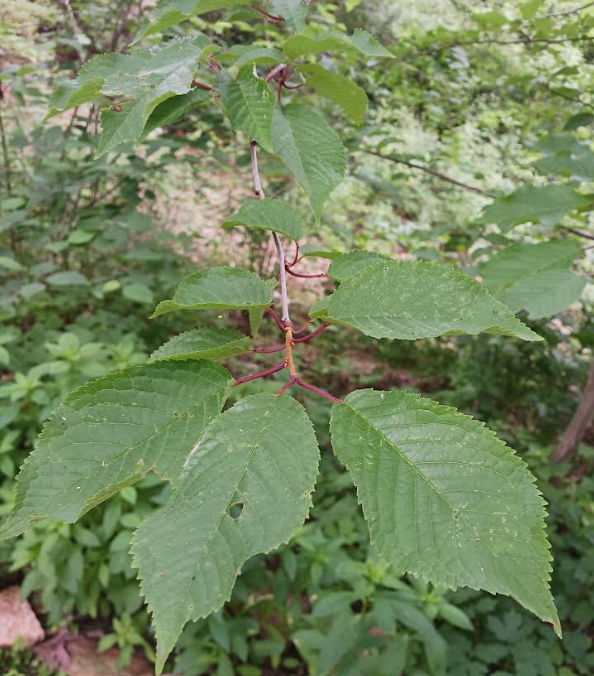Well, not exactly, as white oak is really the dominant species where I live. But there are other trees in the understory and for the longest time I could not identify this tree with a smooth grey bark. I finally figured out that it is a Pin cherry (Prunus pensylvanica). It is classified as an early succession tree so I was puzzled at why it would be in my established woodland garden, but in a way it made sense as they were all located on a hill bordering a kettle pond – there is a good amount of erosion and other tree species have not made any inroads. This is a much prettier tree than the more abundant black cherry (Prunus serotina) that I have all over the garden, but that assessment might be because all of these black cherries have Black knot – the fungal disease that causes black, swollen knots to form on the branches and twigs of the tree. The knots can eventually girdle the branch, causing it to die.
Pin cherry is a small tree that grows to a height of around 30 feet, while black cherry can grow up to 100 feet tall – my neighbor across the street just had one taken down that was immense – I could not get my arms around the trunk.
Pin cherry has a more slender and open growth habit, and the leaves are smaller and more finely toothed. Black cherry supposedly has a denser canopy but due to Black knot I could not verify this. Black cherry leaves are larger and have a more pronounced serrated edge. They are also more oblong in shape and have a dull green appearance.
Both produce cherries that are edible to us, but that is purely anecdotal as birds get to these as soon as there is a hint of color.
Update: I found an additional cherry species among a stand of pin cherry trees, namely sour cherry (Prunus cerasus). This one is native to Eurasia but has been introduced and escaped in the wild quite some time ago. The leaves are rougher than the other cherry species. The fruit is edible, so much so that they are quickly disappearing off the tree, but I haven’t seen the culprit(s).


Leave a Reply